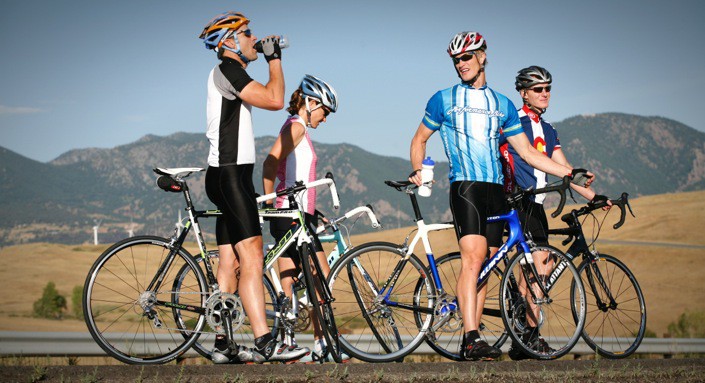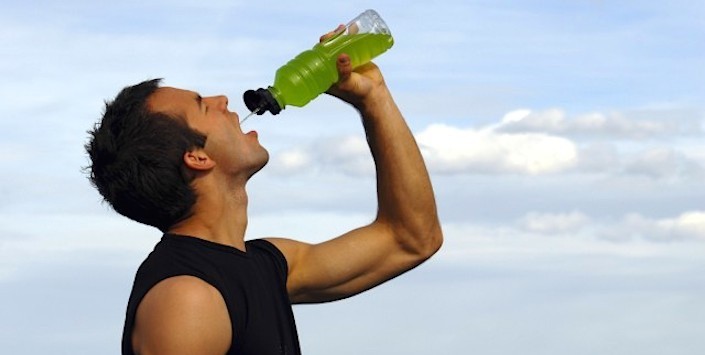
Maintaining your hydration during exercise is absolutely critical to maximizing performance. Water is often referred to as the "most important nutrient for life" and there's good reason for it - water performs some important functions within your body, especially during intense effort.
Water helps your body regulate temperature, assist in joint mobility and even transports nutrients into your body while taking waste and toxins out.
But true 'hydration' in sport is hard to achieve, especially in cycling where there is often no reliable source of water on many rides, other than what you take with you. Let's take a closer look at how to manage your own hydration...
WATER
A good starting point when looking at improving your hydration and fluid intake is with water. The recommended amount of water per person, per day is around 8 glasses of water. This equates to approximately 2 litres (0.55 US gallons) per day of pure water. This may seem hard to achieve when you have to refill a glass eight times, but think of it this way. Drink 1 litre before midday, and 1 litre before 6pm. The point we want to make here is that this recommendation is targeted at 'normal' people living a rather straightforward lifestyle. If you add regular exercise to the mix, you're going to need to step it up in the drinking department!
You'll find that an increase in drinking water will mean more trips to the rest rooms, but it's a clear sign your body is functioning well. Every time you relieve yourself your body is flushing itself out and maintaining your inner health. On an 'off color' topic, keep an eye on your urine color! A dark yellow color is a clear sign of dehydration, so make sure you drink more. If your urine is a slightly yellow to clear color, you should be pleased as punch - you're hydrated. Keep drinking though, because if you don't keep it up, you'll be dehydrated in no time.
FLUIDS AND EXERCISE

Not many of us can rely on a team helper to hand out the drinks. Photo: Bicycling
Here's where cycling comes into the equation... It sometimes feels impossible to maintain your fluid levels on a ride. Some cyclists don't drink much, believing they can drink beforehand and then make up for it afterwards. Given the fact that most of us don't have a team car following us when we train, it can be very hard to carry enough fluids with you while cycling. And it's not always possible to refill your bottles mid-ride using someone's garden hose! Do the best you can, and always make up for your lack of drinking as soon as you get home.
Note: Some cyclists riding small frame sizes can only carry one bottle, or two small bottles due to space limitations. Offer them some of your drink next time, they'll appreciate it.
The recommended intake of fluid during exercise is around 800ml, so just shy of one litre for every hour. If you look at any cycling bottle, they're all 500-700ml due to space restraints on your bike. So that would mean one bottle every hour, limiting your next ride to two hours before you had to refill your bottles. Hmmm.... Easy to preach but near impossible to actually do, especially on the open road or deep in the bush. The only thing you can do in the real world is really focus on your hydration before and after your riding and monitor your 'color' throughout the day after your ride.

TIP: Mountain biking? Use a hydration backpack with large capacity bladder to carry enough water for a long day out on the trails. Carry water on your back and perhaps a bottle of electrolyte drink on your bike. This will leave you well prepared for maximum hydration!
ELECTRO WHAT?

If you want to start a debate with any cyclist, ask them what sports drink they recommend... Then sit back and enjoy the heated discussion. "You can't drink that! There's FAR too much sugar in it" followed by "Just wait til you see the electrolyte levels in it!". The sports industry is filled to the brim with sports drinks and secret formulas, with very few consumers actually knowing what to buy.
We say keep it simple! Try to find a product without a thousand other 'secret ingredients' because there is no such thing. Focus on products that have a good balance of electrolytes (for replenishment) and carbohydrates (for fuel) in a flavor you like. Follow the directions on the container when mixing powder drinks to ensure you maximize the benefits of your product.
The contents of these sports drinks are designed to help you maintain fluid levels, increase fluid absorption and reduce the onset of cramp and loss of performance. Keep in mind that exercise below one hour is not worthy of these drinks, so just stick to water.
One key ingredient to look out for is electrolytes - the magic word that means "go harder for longer" to most people. But what are they, and how do they work?
Electrolytes are positively charged ions (or salts) that your body uses to maintain voltages and signals across cell membranes. These charges also control muscle contractions, which is important! Your kidneys usually look out for you, maintaining electrolyte levels regardless of changes in your body. However you can replace these yourself much quicker by drinking a scientifically formulated drink.

TIP: Taste, and how a product sits in your stomach while exercising, affect us all differently, especially when we're pushing the limits. Before purchasing a tub of electrolyte powder, check if your local bike shop has a sample of different types of electrolyte and sports drinks for you to test out. It never hurts to ask!
After trying a few different products, you will generally gravitate to one that you prefer. This may be due to the flavor or even the noticeable affect it has on your riding. Or perhaps because it has more natural (instead of synthetic) ingredients. Whatever the case may be, always try things of your own accord before settling on just one product. Most of these drinks come in tasty flavors to make it more palatable, so don't drink it all at once!


